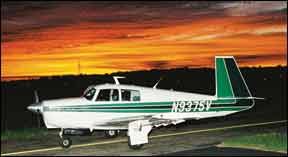Owners who have the eventual need for more speed might eyeball the used Mooney market. The search might logically start with the M20J or 201, which first appeared in 1978. While lacking some creature comforts and panel space, these machines are known for having respectable cruise speed, fuel efficiency and simple systems, while delivering the flying sports-car appeal that pilots love about flying Mooneys. If you find an older pre-201 Mooney that’s been we’ll maintained, has a low-time engine and the most popular mods, there’s a lot to love.
But it’s not all roses. Since the biggest numbers of pre-J models were produced in the 1960s, age is a concern, as is Mooney’s serial bankruptcy and perceived economic instability, although most shops we spoke with have little trouble getting parts and support. The earliest models had wooden wings.
Some of the rest had corrosion problems, fuel tanks with sealant trouble and an aftermarket bladder mod from O & M Aircraft that has an AD. Resale value is another issue. The 3700-plus 1977 J and later models, from the 201 onward, keep a lid on the prices of earlier M20s, no matter what their condition, airframe mods and avionics upgrades. But for the owner on a tight budget who wants a fun airplane that’s a long-term keeper, a pre-J Mooney answers the call.
MODEL HISTORY
The M20 series evolved in 1955 from Al Mooney’s “Wee Scotsman,” the Mooney Mite M-18. This is a single-seat, low-wing, speedy little airplane with manually retractable gear cushioned by so-called rubber donuts. Mooney designed it in the 1940s for simplicity, speed and efficiency. In addition to the donut cushions and the Johnson bar for operating the gear—which would remain an M20 model feature until 1969— the Mite introduced the famous, backwards vertical stabilizer. This backwards stabilizer supposedly improved spin recovery and remains the Mooney’s trademark.
The pre-201 Mooneys, launched as a four-seat version of the Mite, are those that came before the Roy LoPresti aerodynamic redesign with the J model in 1977, which boosted cruise speeds about 10 to 15 knots. The first M20, the four-seat Mark 20, built from 1955 through 1958, had a wooden wing and tail. Powered by a 150-HP Lycoming O-320 with a constant speed prop, it gave way in 1958 to the metal-tailed M20A, powered by a 180-HP Lycoming O-360 A1A. It still had the wooden wing. These two models, of which nearly 700 were built through 1960, had the worst in-flight breakup record of any small airplane and ADs that required inspections of the wing and tail for rot. You can buy one for less than $25,000, though, and cruise at better than 140 knots.
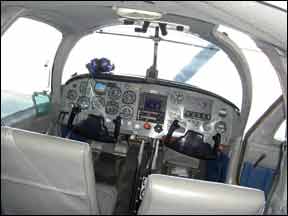
The B-model Mark 21, made only in 1961, got rid of the wood and boosted the standard fuel capacity from 35 to 52 gallons. Its metal wing design, with few changes, is still in production. The B quickly gave way to the most ubiquitous of all M20 models, the C, in 1962. It had an engine change to the O-360-A1D, more rudder travel, a hand-pumped hydraulic flap actuator instead of a mechanical linkage, increased flap deflection and a 125-pound increase in useful load. The C remained in production until 1977. More than a third of the 6200 pre-J M20s were C models.
Mooney’s success inspired it to try an economy version: the Model D Master with fixed gear, which cost the design 20 knots or so. Only 60 were made from 1964 through 1966 and it’s rare to find one that hasn’t been converted to retractable gear. The same year saw Mooney try a pricier package, too. The Model E Super 21 Chaparral introduced the 200-HP Lycoming IO-360-A1A, making it the first of the Mooneys without a carburetor heat control.
In 1965, Mooney introduced its Brittain wing-leveler autopilot as a standard feature on all models, calling it Positive Control because it was always on unless the pilot pressed a disconnect button on the control yoke. No matter how owners felt about this odd system, it probably prevented some graveyard spirals and remained a feature until the 201 came along. Today, the ancient Brittain autopilot may be tough to find service for, although there are some sources for repair.
Known for its tight fit as we’ll as speed, the M20 fuselage got a foot-long stretch with the Model F Executive in 1966. Three were made as that year ended and 536 in 1967, more in one year than any model before or since. Like the C and E, the F remained in production until the paradigm shift of LoPresti’s 201. In 1969, they all got one-piece windshields, a popular mod now for earlier models.
The M20G in 1968 matched the C model’s 180-HP engine with the longer fuselage and lasted two production years. A more notable and costly loser was the M22 pressurized Mustang. Introduced in 1968, it looked like a tank and helped tank the company, which went bankrupt in 1969. Butler Aviation bought Mooney and stopped production in 1972. Republic Steel bought in and started making Mooneys again in 1974. Republic spun off the design for a Mooney 301, which Socata built as the TMB700, and merged the company with a French firm in 1984.
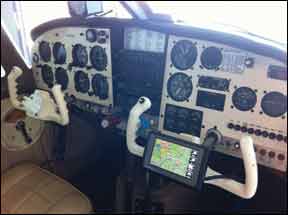
There was another bankruptcy in 2001 and another in 2004 followed by reorganizations and a surprising addition to the line around 2006— the M20TN Acclaim—which remains on the company website today. It has a G1000 glass cockpit and blistering speed that some have labeled as the fastest production piston single. Powered by a 280-HP Teledyne Continental TSIO-550G with twin turbochargers and dual intercoolers, it’s fast and expensive. If a limited budget has you considering a pre-J M20, you’ll lust for this speedster.
MARKET SCAN
The current Bluebook average price range for C models ranges from $28,000 to $37,000, $40,000 to $42,000 for E models and $46,000 to $58,000 for F models. For contrast, when we looked at the market in 2006, a later F-model booked for $72,000. Nothing quite compares to a Mooney for speed and efficiency but other step-up airplanes that are close in class are generally priced higher. Such is the case for earlier Cardinal RGs, Piper Arrows, and Beech Sierras.
Performance
Mooneys are all about getting speed without burning a lot of gas. Most older models have a 180-HP engine and some have a 200-HP fuel-injected Lycoming. The owner who steps up from a Skyhawk to a mid-1960s Model C is going to be fat, dumb and happy watching the world slip under the leading edge at a noticeably higher pace while flight planning for 10 or so gallons per hour.
The pre-1977 Model-C Ranger, for example, cruises at 150 knots, the Bluebook says somewhat optimistically. It has a sea level rate of climb of 860 FPM. Takeoff over a 50-foot obstacle is listed as about 1400 feet and landing over one requires 1550 feet.
Mooneys perform we’ll on 180 HP by having low drag, which requires sacrificing space. It feels like you wear a Mooney and, to some, that’s part of its pleasure. There’s a sports-car slouch required to slip behind the controls and the pilot sits low with their legs stretched under the panel — a possible problem for short pilots. Those used to sitting up high and having a good view out and below will feel a bit claustrophobic. Because the cowling may not be in the pilot’s field of view, different sight cues are needed during landings.
These airplanes are rumored for being difficult to land. That may have more to do with poor basic training and bad habits that pilots might get away with in slower aircraft. Still, the Mooney, with its rubber-donut gear, is easy to grease on if the approach is stable, speed on short final no more than 75 knots, the roundout is not made too high and the nose is held off. At higher speeds, its slippery design will float in ground effect. That’s where pilots get in trouble, over-controlling or dropping it on, inducing a bounce, then letting the nose fall through and hit the runway. That’s how pilot-induced oscillations start and woe to the transitioning Mooney flier who dumps the nose on the runway.
In crosswinds, there is also a legend that Mooneys are tricky. Again, good speed control, cross-control technique and judgment make up for any quirks, especially in C and later models, which have more rudder authority than the early M20s.
Short-field operations can be a challenge. Pilots used to Cessna flaps, for example, will find the Mooney’s almost absent and, as noted, the airplane will float if approach speeds are too high. Speed brakes are a popular mod in later models. The problem with them is a tendency to sink in the pattern and have to drag it in on final. The fix there is to carry more power than you’re used to once those brakes are deployed.
Mooniacs, as the devoted call themselves, love the older models with the Johnson bar for operating the manual gear. However, this gear has low operational speeds, so it can’t serve as a speed brake for en route descents. It also takes a lot of muscle to retract if the pilot lets the speed build too high on departure.
There’s not a lot of room in a Mooney, but load-carrying ability is not bad. Squash four people into the airplane, fill the tanks and you’re in trouble in most four-seat airplanes. The useful load of a Mark 21 Model C is 1050 pounds not counting any mods and new equipment, which are common on these older models. That leaves, at most, 738 pounds for people and baggage. Pilots have commented that these airplanes are perfect cross-country machines for one or two people and their bags.
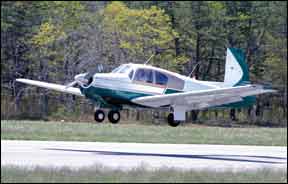
Roll response is heavy. The Mooney is controlled with pushrods, not cables, and some pilots like their solid feel. Its heavy aileron feel makes it a good IFR airplane and the Positive Control feature, on those models that have not had autopilot upgrades, is simple and helpful when there’s work to do in the cockpit. Cobham S-TEC has an STC for a variety of aftermarket, rate-based autopilots that can add sizeable automation to the cockpit.
Good rudder control to prevent yaw is crucial when practicing stalls in a Mooney. The airflow over that clean wing breaks abruptly and one wing often will drop. Lower the nose, pick it up with aggressive rudder and all will be well. Spins are not for the faint-hearted (or legal-minded). You’ll need at least 1000 tense feet to recover.
Maintenance
Pre-J shoppers should study up on a number of issues involving these models and check logbooks carefully. For the pre-buy, use a mechanic who really knows Mooneys. Problem number one is the old wood wing and tail. Avoid it. Problem number two is corrosion in the fuselage tubing. The Mooney is known as a well-built and strong airplane. It has a notably low break-up rate and a virtual roll cage around the cabin. Watch out especially for models built in the late 1960s and early 1970s, before Republic bought the company. Cost-cutting as bankruptcy loomed shortchanged rust-proofing techniques. Be familiar with Mooney Service Bulletin M20-208B from August 1989, which calls for corrosion inspections.
Another common problem is deteriorating fuel-tank sealant that contaminates fuel and causes engine failure. A 1985 AD covers the tanks. Other ADs include one in 2004 for airplanes with the popular O & N bladder fuel cell mod, the result of reports that rainwater was entering the fuel bladders. O & N addresses the fix, explained on their web page.
Over the years, there also have been ADs involving cracked aileron control links, the original Dukes fuel pump, the electric gear, the control wheel shaft, ingestion of air filter screens and gaskets and corrosion in the control rigging and landing gear. There have been few recent ADs, however. Good logbooks or a good mechanic (and perhaps a big check for catch-up work) should be vital to any buyer. Watch out for nose gear damage as a result of line personnel exceeding the turn limits while towing the airplane, which requires a wide radius.
MODS, OWNER GROUP
Lots of help for Mooney buyers and owners is available on line. Owners can start on the company Website, www.mooneyaircraft.com. It’s a good resource for locating other Mooniacs and product links. There’s also the Mooney Aircraft Pilots Association, which is partly sponsored by Mooney and Falcon Insurance Company. Visit it at www.mooneypilots.com. The Mooney Owners of America (MOA) claims to be member owned and managed, publishes Mooney Pilot magazine and can be visited at www.mooneyowners.com. Although the association has a Website, we’re not sure how active it is.
The mods for older Mooneys to make them look and behave just like J and later models are almost countless. Speed mods, one-piece windshields, new wingtips, an alternator to replace the old generator on early models, fuel bladders, larger fuel tanks, speed brakes, new panels to replace the awful old ones, soundproofing and new engines are just some of the improvements available.
Lake Aero Styling (www.lasar.com and 703-263-0412) offers the LASAR line of mods, including a 201-style windshield and wingtips plus a healthy selection of approved, custom-created replacement parts. O&N Aircraft Modifications (www.onaircraft.com, 570-945-3769) sells six interconnected fuel bladders to replace the tanks. LoPresti Speed Merchants in Vero Beach is in the game, of course, with a new cowling, gap seals and other fixes (www.speedmods.com, 877-565-1731). Precise Flight offers speed brakes; see www.preciseflight.com, 800-547-2558.
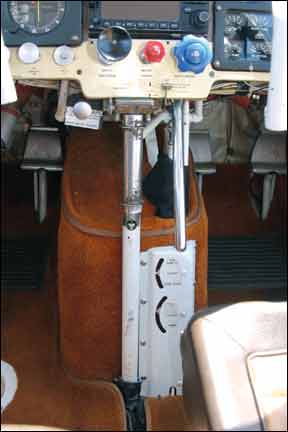
When it comes to avionics—as in most aircraft—anything goes, although the instrument panel and radio stacks in some older models isn’t always accommodating for loading lots of gear. Areas of usable space on the outside of the panel are often hindered by available depth behind the panel, with airframe support structure getting in the way. Avionics shops need to get creative during installation and many chide of the so-called Mooney factor when pricing upgrades.
OWNER COMMENTS
I’m an airline pilot and have a 1965 M20C that I use to commute 500 nautical miles, from Topeka to my crew base of Huntsville, Alabama. I chose the Mooney for its low initial and operating costs, relative high speed and high-altitude capability.
These aircraft are we’ll built with pushrod controls—similar to single-seat formula racing cars—plus a smooth, partial laminar-flow wing. They have reliable, simple, mechanical gear that lack electric motors. My aircraft has most of the available speed mods, which adds a total of roughly 10 knots. The instrument panel has been updated to the post-201 design, with basic T configuration and circuit breakers that are grouped together. It has a Garmin 250XL VFR GPS plus a Hilton ADS-B receiver that’s coupled to an iPad. Most of my flights are flown IFR.
This airplane will climb direct to 10,000 feet on a summer day and cruise at 144 knots initially, with 150 knots attainable at lighter weights. I only count block fuel burn, which is 9.4 GPH, averaged over one year. With 50 gallons usable, the airplane has long legs.
For my mission, there is no other certified aircraft that can be had for under $50,000 that matches the performance and simplicity of these older Mooneys. Although not in the Bonanza class for speed and comfort, a pre-201 is an excellent alternative to current generation light aircraft when distance flying is a requirement.
George R Clark
via-email
The D-model Mooney is often overlooked because almost all of them have been converted to C-models. But there are three known unconverted D models still flying and I own one of them.
While a fixed gear Mooney seems like an oxymoron, it’s still a very capable machine with most of the major Mooney characteristics.
Scott Peterson
Santa Rosa, California
It was a long journey owning N4073N, a 1968 M20C Ranger short-body, with the manual gear Johnson bar. I left it factory stock until I got the Mooney pilots’ addiction to speed. I tweaked and modified it so it was essentially a short 201, with a 200 HP engine and all the mods you could possibly install. My advice? Don’t do this. Instead, buy the best airplane you can afford because you will never get the upgrade money back during resell.
My unmodified M20C was a great airplane and quite efficient at altitude—burning about 8.5 GPH cruising at 142 knots. I could get into and out of a short, 1600-foot grass strip and was reasonably comfortable in the front seats for any distance traveling.
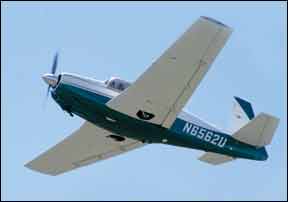
So why did I sell this good airplane to buy a 1998 M20J Allegro? With the old M20C, my long trips from Connecticut to Florida were made longer, since every flight needed a fuel stop to have fuel reserves using the 52 gallons it held. For comparison, my new 201 holds 64 gallons and burns the same 8.5 GPH at altitude. I can get seven hours of endurance.
The carbureted engine in my M20C, like others, seemed to have uneven fuel distribution, the back seats had minimal leg room that prevented passenger comfort on long trips and the radios were old—until I upgraded them but still didn’t have a HSI. The small instrument panel was the non-standard arrangement and this took some getting used to.
The manual landing gear was a low cost and low maintenance system that, if properly greased and limits set, was a joy to use. The lack of speed brakes on the M20C meant that IFR descents required my request for a few descending turns, since the slippery airframe readily picks up the speed in a descent.
The 201 has a quieter cabin, with far better soundproofing and it can travel from my home base in Connecticut to Florida nonstop, unless the winds are against me. The interior is more modern and spacious and the modern avionics look cool—plus I finally got my HSI and flight director. I do miss the short field performance of my M20C—I need about 500 more feet of runway with my Allegro.
Robert McGuire
via e-mail
I own a 1963 Mooney M20C. I was originally looking at Cherokee 180s as my first airplane but noticed a local ad for a Mooney. I had around 100 hours of piloting time and was worried it would be too much airplane for me. From the moment I sat in it, I knew it was the airplane for me. It has a sporty, Corvette feel when you sit in the seats, since your legs are deep under the panel.
I am 6 foot 3 inches tall and have plenty of legroom, despite the warnings that I am too big to fit in a Mooney. As for handling, the pushrod controls—as opposed to cables—have a solid feedback. I learned that the Mooney has a roll cage, which from a safety standpoint, was appealing. The airplane is solid and mine has a three-blade prop. I never have any trouble slowing it in the traffic pattern, despite all of the stories that say otherwise. However, it’s so slippery that it is very common for it to cruise in the yellow arc, unless you pull the power way back.
Since I live about one hour north of Los Angeles and travel to various clients to the south, the Mooney gets me there in 30 minutes, as opposed to two to five hours each way sitting in the notorious traffic. Since the fuel burn is 10 GPH—comparable to an SUV—my clients have no problem paying for my travel time. The aircraft cruises at 135 knots.
There are more mods for these airplanes than any other that I know of. I have quite a few of them, including a model 201 windshield retrofit from LASAR, Wing Root Leading Edge Fairings from LASAR, Cowl Closure Fairing from LASAR, Wing tip Fairings from LASAR, a Vernier Mixture Control mod and the O&N Bladder Fuel System.
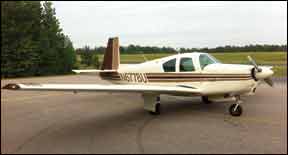
The wings of these aircraft are notorious for leaking and there are frequent debates about whether to strip and reseal them or spend the extra money to buy the retrofit bladders. You can try stripping and resealing and there are a lot of resources online for do-it-yourself people, but I found it too daunting and finally had my mechanic install the bladders.
The cost to insure it is about $1400 per year for a hull value of $65,000.
Kier Shapiro
Oxnard, California
I owned a 1969 M20F for about 20 years and was very happy with it. It nearly made book numbers and I would plan for 145 knots at 5000 to 9000 feet. There were a few maintenance surprises, so inspections by someone familiar with older Mooneys is essential to avoid simple problems from becoming bigger ones. There are some good comments on some of the Mooney modifiers’ sites, plus excellent sources of information and service from Paul and Sherry Loewen of LASAR.
I learned to fly in Grummans and transitioned to 201s while renting, so the M20F wasn’t a problem for me, although I can see where pilots trained in other types would have some adjusting to do. You really want to manage airspeed on approach—trying to force the plane onto the runway just doesn’t work. Practicing to get 100 MPH indicated on downwind, 90 MPH on base and stabilized 80 MPH on final make landing much easier.
The full-time Brittain wing-leveler is simple and effective. I never found the need for an aftermarket autopilot. Maintaining the rubber boot aileron servos is not that difficult or expensive compared with all the electrical stuff of later designs.
Corrosion is becoming an issue, typically due to trapped water in the wing and control surfaces. I had to have a flap rebuilt for this reason. Another area for corrosion is the steel tube cabin frame. An AD addresses this and calls for the moisture-trapping insulation to be removed. I upgraded the interior with a kit from Airtex and made sure I looked at every piece of the frame that might trap water.
Doing some maintenance myself helped to keep costs down and offered confidence that all was we’ll inside. Compliance with the landing gear actuator AD takes a bit of a learning curve, as does understanding how to properly adjust the manual gear. You want someone who knows Mooneys to do this every year, or train you, so you can assist. These are not hard processes to master, but having done it a few times will reduce the time required.
If the turning angle limits are exceeded while being towed with a tug, some of the tubes that form the nose gear truss are crushed together. Later models—and replacement parts through STC—have turn stops to prevent this damage. If you spot any dents or deformation in the tubes, the nose gear is likely weakened and can collapse.
David Josephson
via e-mail
I bought my M20C in the middle of my flight training and, against all advice, switched to it from a rented 172 and ultimately got my private certificate in it. It took me a little longer, as it has a constant speed prop and retractable gear. Compared to the Cessna, it’s hard to land—with a prop clearance so minimal that landing mistakes can easily lead to a prop strike. I avoided touch-and-go’s with this airplane, so landing training took a lot longer.
I acquired the aircraft in September 2009 and paid $37,000. Annual inspections average $2000 to $4000. Fuel consumption runs a consistent 10 GPH, on average.
For mods, I installed the fuel bladders and feel they are a must for every pre-201 to avoid tank re-sealing headaches. Another must is speed brakes, as these are fast machines that are hard to slow down when coming from high altitude.
For looks and more speed, I have a 201 windshield and a one-piece belly skin that saves some dollars during annual. The three-blade prop looks awesome, makes for a quieter cabin and increases climb performance.
What do I love about my Mooney? It’s a great value when considering its speed and fuel consumption. It has a beautiful profile and is stable and responsive. On the negative side, it’s a bit small and parts are difficult to acquire.
The aircraft’s previous owner told me something about how to land this bird, and that’s to keep the speed at 80 MPH on final and you’ll grease every landing. If you fly over 80, the airplane just wants to keep flying and will bounce. Any slower and you’ll get a hard landing.
Daniel Arroyo
via e-mail

